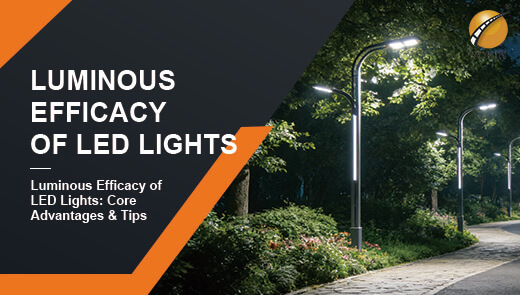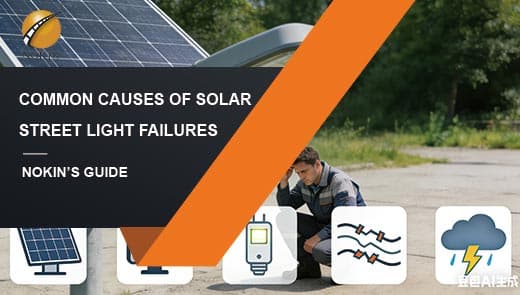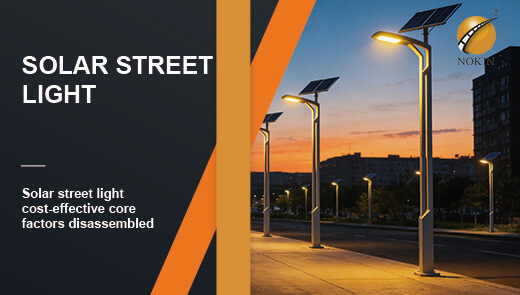Top 5 Things You Should Look Out For Solar Street Light Suppliers
Solar street lights have become increasingly common in countries around the world. They do not require an external power grid and can supply power independently relying on solar energy, which is both energy-saving and environmentally friendly, and can also reduce long-term electricity costs. However, in practical applications, many users have encountered problems such as "street lights breaking down after half a year of use", "it takes less than three hours to light up in rainy weather", and "no response to after-sales repair requests". The root cause of these problems often lies in the initial choice of unreliable solar street light suppliers.
A high-quality solar street light supplier can not only provide products that meet quality standards, but also offer guarantees in the later installation, maintenance, and fault handling stages, helping users avoid the additional costs of frequent repairs and replacements. Conversely, products from inferior suppliers may seem low-priced, but they can put users in a predicament of "buying cheap but using expensive".
Next, NOKIN will break down in detail from five core dimensions how to accurately screen solar street light suppliers, helping you avoid cooperation traps and select truly reliable partners.
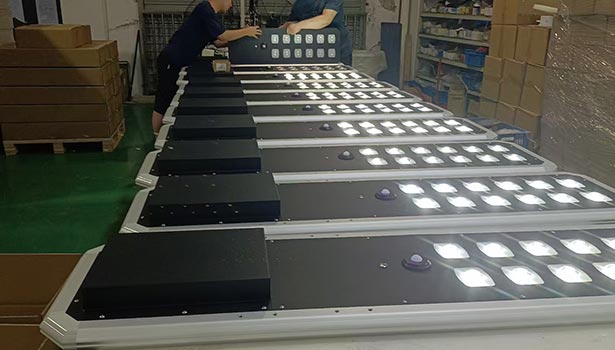
Solar Street Lights Quality and Durability
The core material of solar street lights
The core performance of solar street lights relies on three major components: solar panels, batteries, and LED light sources. The materials of these three types of components are the basis for judging the durability of the product.
|
Component |
High-Quality Solution |
Potential Problems (High-Quality) |
Low-Quality Solution |
Potential Problems (Low-Quality) |
|
Solar Panel |
Tempered glass surface layer + anti-corrosion backsheet |
Stable power generation efficiency, durable protection |
Ordinary glass or inferior plastic backsheet |
Light transmittance declines within 1–2 years; backsheet cracks; reduced power generation capacity |
|
Battery |
Lithium iron phosphate (LiFePO4) or lithium-ion (Li-ion) battery with ABS flame-retardant shell; ≥2000 cycle life; resistant to high/low temperatures; leak-proof; safe |
Long cycle life, stable performance in extreme conditions |
Lead-acid battery or inferior cells |
Prone to bulging, leakage, and fire; short lifespan; unstable performance in winter or high temperatures |
|
LED Light Source |
Ceramic or high-temperature resistant silicone encapsulation; can withstand ≥80℃; anti-aging; brightness attenuation ≤10% within 5 years |
Long service life, stable brightness |
Ordinary plastic encapsulation |
Ages and yellows within 1 year; brightness reduction ≥30% |
The Component Quality of Solar Street Lights
Give priority to monocrystalline silicon solar panels
At present, the mainstream solar panels are divided into two categories: monocrystalline silicon and polycrystalline silicon. The conversion efficiency of monocrystalline silicon panels can reach 18% to 23%, while that of polycrystalline silicon is 15% to 18%. Under the same lighting conditions, monocrystalline silicon panels can generate 10% to 20% more electricity per day, making them particularly suitable for areas with insufficient light.
High-quality solar street light suppliers will clearly indicate the conversion efficiency and brand of the panels. If a supplier only says "high-efficiency panels" without providing specific parameters, be vigilant that they may use low-efficiency components.
Avoid the trap of falsely labeled battery capacity
Some suppliers, in order to cut costs, will "falsely label" the battery capacity - for instance, they may mark it as "100Ah", but the actual capacity is only 80Ah. Such a battery, when fully charged, may not be able to support street lights to stay on continuously for 8 hours, affecting night lighting.
When conducting the inspection, it is necessary to request the solar street light supplier to provide the battery test report, confirming parameters such as capacity and cycle life. At the same time, you can ask about the capacity retention rate of the battery at -10 ℃. High-quality batteries can maintain a capacity retention rate of over 80% at low temperatures, while inferior batteries may have a capacity retention rate of less than 50%.
Solar Street Lights Heat Dissipation Design
Many users tend to overlook the heat dissipation design, but in fact, the heat dissipation effect of solar street lights directly affects the lifespan of the battery and LED light source.
Batteries generate heat during charging and discharging, and LED light sources also produce heat when working. If the light body has poor heat dissipation and the internal temperature is too high, it will cause the battery cycle life to be shortened by more than 30% and the brightness attenuation rate of the LED light source to accelerate.
High-quality solar street light suppliers' products will adopt the design of "hollowed-out light body + heat dissipation aluminum material" : The hollowed-out structure enables air circulation and accelerates heat dissipation. The thermal conductivity of heat dissipation aluminum material is more than ten times that of ordinary plastic, which can quickly conduct heat to the outside of the light body.
When inspecting, you can check if the light body has obvious heat dissipation holes or heat sinks, or ask the supplier "the maximum internal temperature of the light body when it is working" - under normal circumstances, the internal temperature should be 5-10℃ lower than the ambient temperature. If the solar street light supplier cannot provide this data, you should choose carefully.
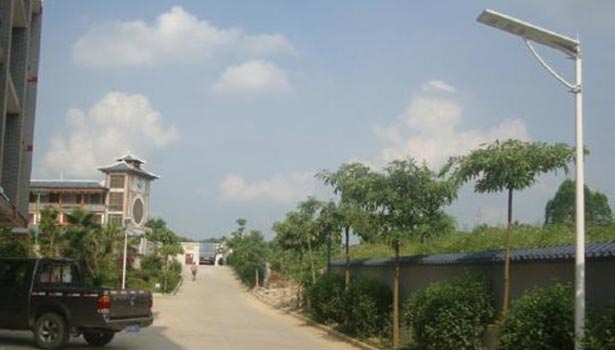
Solar Street Light Suppliers Qualifications and Reliability
When choosing a solar street light supplier, it is not only about selecting the product, but also about choosing a long-term partner. The qualifications and reliability of suppliers directly determine whether problems such as "goods not matching the description" and "after-sales shirking" will occur during the cooperation process.
International Certification
International certification is a "hard indicator" for judging whether the products of solar street light suppliers meet quality and safety standards. At present, the core certifications recognized in the industry include two categories:
ISO Quality Management System Certification
ISO 9001 certification is a manifestation of a supplier's quality management capability - suppliers who have obtained this certification need to establish a complete production process control, raw material inspection, and finished product testing system, which can effectively avoid "batch-based quality problems".
CE Safety Certification
CE certification is a safety standard of the European Union, covering requirements such as electrical safety and electromagnetic compatibility. Solar street lights that have passed this certification are more standardized in terms of circuit design, insulation protection and other aspects, which can reduce the risk of leakage and short circuit when used outdoors.
Solar Street Light Manufacturers Reputation
Customer review
You can ask the solar street light supplier for the contact information of similar customers to directly understand the cooperation experience. Pay close attention to issues such as "the failure rate of the product after two years of use" and "the response speed of after-sales service" - if customers report "no failure after three years of use" and "24-hour on-site service", it indicates that the products and services of the solar street light supplier are more reliable.
Project case
Large-scale projects have higher requirements for the qualifications, production capacity and after-sales capabilities of solar street light suppliers. If the supplier has participated in such projects before and the cooperation period exceeds three years, it indicates that it has a stable supply capacity and after-sales guarantee capability.
Conversely, if a supplier can only provide cases for small individual customers or the case cycle is less than one year, it is necessary to be vigilant that it may lack long-term service capabilities - for instance, some small manufacturers may experience delayed delivery due to insufficient production capacity after receiving large orders, or the after-sales team may be small and unable to handle faults in a timely manner.
Industry reputation
One can check through channels such as industry associations and government procurement platforms whether solar street light suppliers have any negative information such as "breach of contract records" or "quality complaints". If a supplier has ever been returned due to "substandard product quality" or complained about for shirking after-sales service, they should be directly excluded.
Solar Street Lights Battery and Panel Parameters
Battery Parameters
The core parameters of a battery include "capacity" and "endurance", which should be selected in combination with the usage scenario. The lighting requirements for different scenarios and the corresponding battery capacity matching are shown in the following table:
|
Usage Scenario |
Continuous Lighting Duration |
Typical LED Power |
Battery Voltage |
Basic Required Capacity (Ah) |
Suggested Redundant Capacity (Ah) |
Final Recommended Capacity (Ah) |
|
Rural road |
8–10 hours |
20W |
12V |
13–17 |
3–4 |
≥16 |
|
Urban main roads |
10–12 hours |
30W |
12V |
25–30 |
5–6 |
≥30 |
|
Park / Community |
6–8 hours |
15W |
12V |
8–10 |
2–3 |
≥10 |
Note: 20% of the redundant capacity should be reserved to deal with insufficient charging on rainy days.
Battery life
Battery life is not only determined by capacity, but also requires attention to two details:
- Low battery protection: High-quality batteries are equipped with a "low battery protection threshold" (such as automatically cutting off power when the remaining battery power is 20%) to prevent over-discharge damage to the battery. Without this function, the battery's cycle life may be shortened by more than 50% due to "deep discharge".
- Low-temperature battery life: In cold regions, pay attention to the "battery life retention rate at -10℃". High-quality batteries can maintain a battery life retention rate of over 70% in low temperatures, while low-quality batteries may drop below 50%, resulting in a significant reduction in the lighting time during winter.
Solar Panels Parameters
The core parameters of solar panels are "conversion efficiency" and "power", which directly affect the daily power generation:
The higher the conversion efficiency, the stronger the power generation capacity
The conversion efficiency of monocrystalline silicon panels (18%-23%) is higher than that of polycrystalline silicon panels (15%-18%). Under the same area, high-efficiency panels can generate 10% to 20% more electricity every day. If your project is located in an area with weak light, it is recommended to give priority to choosing panels with a conversion efficiency of ≥20% to ensure that sufficient power can be accumulated even on rainy days.
Match the panel power according to the battery capacity
The panel power should match the battery capacity to avoid "insufficient power generation" or "overcharging". Taking a 30Ah, 12V battery as an example, the required panel power is approximately (30Ah×12V) ÷4h (average daily effective light duration) =90W.
If the panel power is too low (such as 70W), it may not be able to fully charge the battery during the day. If the power is too high (such as 130W), it may cause overcharging of the battery and shorten its lifespan. When conducting the inspection, the supplier should be asked to provide a matching solution of "panel power - battery capacity" and explain the calculation logic.
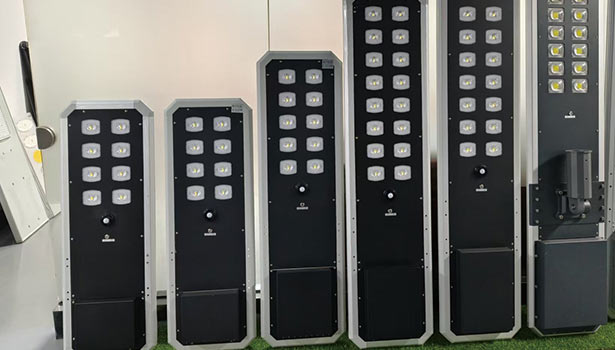
Solar Street Lights Warranty and After-sales Service
The service life of solar street lights can last for 5 to 10 years. The warranty and after-sales service in the later stage directly determine the "usage cost" and "operation and maintenance efficiency". Many users neglect this point, resulting in no one dealing with faults when they occur later, and they have to replace the parts at their own expense, incurring additional costs.
Warranty Clause
The warranty clause is the "commitment" of solar street light suppliers to product quality, and three aspects need to be focused on. The industry standards for the warranty period of core components are shown in the following table:
|
Core Component |
Industry Standard Warranty Period |
High-Quality Product Warranty Period |
Remarks |
|
Solar Panel |
≥5 years |
Up to 10 years |
Longer warranty reflects higher durability and reliability |
|
Battery |
3–5 years |
≥5 years (LiFePO4 batteries) |
Lithium iron phosphate batteries generally have longer lifespan |
|
LED Light Source |
5–8 years |
8+ years |
Lifespan depends directly on packaging material quality |
|
Controller |
≥3 years |
3–5+ years |
Controllers with circuit protection are more durable |
Warranty coverage
The warranty of high-quality solar street light suppliers will cover the four core components of "solar panels, batteries, LED light sources, and controllers", and some even include the light poles. If the supplier only guarantees the LED light source but not the battery and panel (these two types of components have the highest cost), be cautious - if the battery or panel is damaged later, you may need to replace it at your own expense, and the cost of replacing a single battery can reach 75 to 100 US dollars.
Warranty details
The warranty terms of some solar street light suppliers are "ambiguous", for instance, they only state "5-year warranty", but do not specify "whether it will be repaired or replaced after a fault" or "whether it includes on-site service fees". When conducting the inspection, it is necessary to make it clear to the supplier:
After a malfunction, should the new parts be replaced for free or the old ones be repaired?
Is the cost of on-site service (such as transportation and labor costs) included in the warranty?
During the warranty period, if the same component malfunctions multiple times, can the entire product be replaced?
If these details are not clear, disputes over "still needing to pay out of pocket during the warranty period" may arise later.
Solar Street Lights After-sales Service
Installation support
The installation of solar street lights involves professional operations such as "panel Angle adjustment", "battery wiring", and "controller debugging". If installed improperly, it may lead to a decrease in power generation efficiency of more than 30%, and even cause safety hazards (such as short circuits due to incorrect wiring).
High-quality suppliers will offer "on-site installation" or "professional installation guidance" : On-site installation can ensure the installation quality; If it is remote guidance, it is necessary to confirm whether the supplier provides "installation video tutorials" and "online real-time guidance", and promises to "assist in debugging to normal operation after installation".
Maintenance response
If outdoor street lights malfunction and are not repaired for a long time, it will affect lighting safety (for example, the malfunction of road street lights may lead to traffic accidents). High-quality suppliers need to have the ability to respond quickly
- Response time: Reply to fault inquiries within 24 hours;
- Alternative solution: If the faulty component needs to be returned to the factory for repair, will temporary replacement parts be provided to avoid long-term lightoutages?
Technical support
The daily maintenance of solar street lights (such as panel cleaning and battery care) can extend their service life. High-quality suppliers will regularly provide "operation and maintenance guidance"
- Panel cleaning: It is recommended to clean it every three months to avoid dust accumulation which may affect power generation.
- Battery maintenance: Avoid long-term full charge storage. It is recommended to perform a "deep discharge - charge" cycle every six months.
- Seasonal adjustment: In winter, the "lighting power" of the controller can be appropriately increased to avoid insufficient battery power.
If the solar street light supplier provides no technical support after sale, users may shorten the product's lifespan due to improper operation and maintenance.
Solar Street Lights Total Cost of Ownership
When many users choose solar street light suppliers, they only focus on the initial purchase price, believing that "low price means good deal". But in fact, the total cost of ownership of solar street lights is the core factor in judging their cost performance.
Break Free from the "Low-price Trap"
Some solar street light suppliers lower prices by "lowering material standards", such as replacing monocrystalline silicon with polycrystalline silicon panels, substituting lead-acid batteries for lithium iron phosphate batteries, and replacing aluminum alloy light bodies with ordinary plastic ones. The initial purchase price of this type of product may be 20% to 30% lower, but the later cost will increase significantly.
Calculate the Long-term Cost of Solar Street Lights
Installation cost composition
|
Cost Item |
Range (USD / set) |
Explanation |
|
Labor Cost |
7 – 14 |
Includes installation of light posts and circuit connection |
|
Auxiliary Materials |
4 – 7 |
Includes wires, fixed brackets, and waterproof glue |
|
Transportation |
3 – 7 |
Based on transportation distance of 50–200 km |
|
Total |
14 – 28 |
High-quality suppliers often include all items in the total quotation |
Cost estimation for replacing components of solar street lights
|
Component Name |
Specification |
Unit Price Range (USD) |
Replacement Cycle |
Single Replacement Cost (USD) |
|
Battery |
30Ah / 12V |
75 – 100 |
5–8 years |
75 – 100 |
|
LED Light Source |
30W |
7 – 11 |
8–10 years |
7 – 11 |
|
Controller |
12V / 20A |
11 – 17 |
5–7 years |
11 – 17 |
|
Solar Panel |
100W |
43 – 57 |
8–12 years |
43 – 57 |
High-quality solar street light suppliers will offer "discounted prices for later component replacement", such as a 30% discount for battery replacement after the warranty period, which can further reduce the long-term replacement cost.
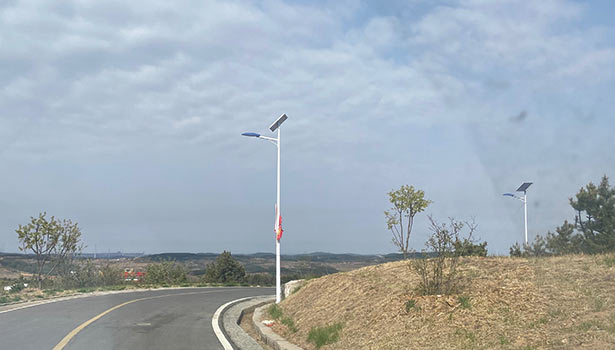
When choosing a solar street light supplier, it's not about choosing the lowest price, but about choosing reliability. Choosing the right solar street light supplier not only ensures the long-term stable operation of the street lights but also helps you reduce operation and maintenance costs, truly achieving "one-time investment, long-term benefits".

